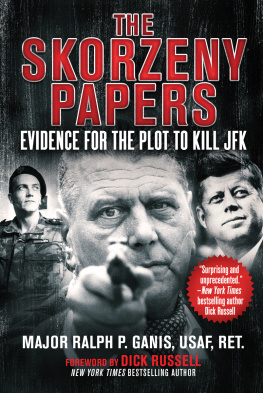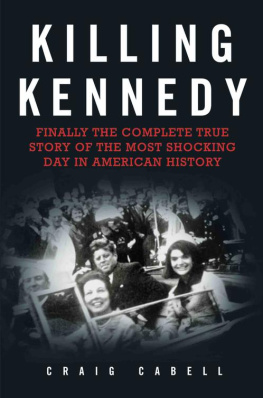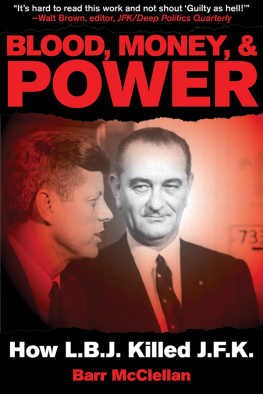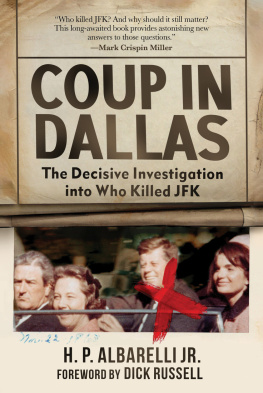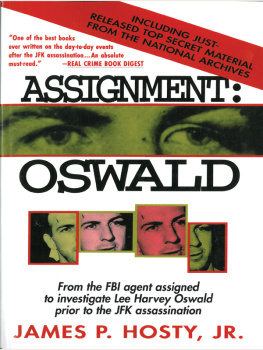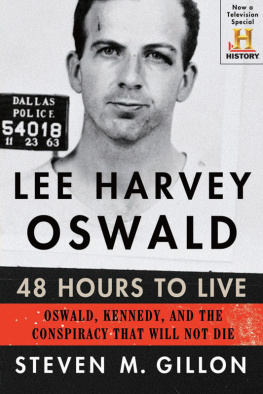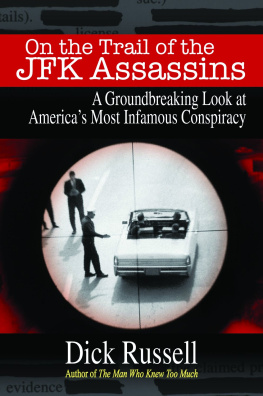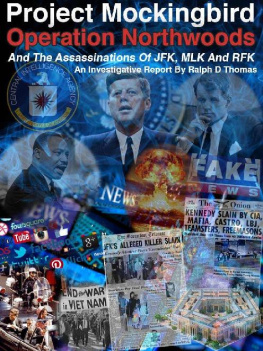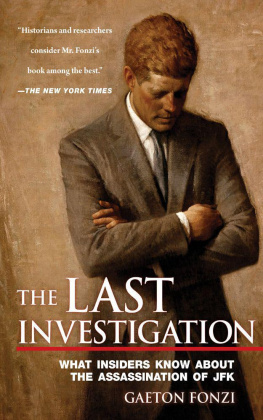Copyright 2018 by Major Ralph P. Ganis, USAF, Ret.
All rights reserved. No part of this book may be reproduced in any manner without the express written consent of the publisher, except in the case of brief excerpts in critical reviews or articles. All inquiries should be addressed to Skyhorse Publishing, 307 West 36th Street, 11th Floor, New York, NY 10018.
Skyhorse Publishing books may be purchased in bulk at special discounts for sales promotion, corporate gifts, fund-raising, or educational purposes. Special editions can also be created to specifications. For details, contact the Special Sales Department, Skyhorse Publishing, 307 West 36th Street, 11th Floor, New York, NY 10018 or .
Hot Books Press and Skyhorse Publishing are registered trademarks of Skyhorse Publishing, Inc., a Delaware corporation.
Visit our website at www.skyhorsepublishing.com.
10 9 8 7 6 5 4 3 2 1
Library of Congress Cataloging-in-Publication Data has been applied for.
Cover design by Brian Peterson
Cover photos courtesy of the author
Print ISBN: 978-1-5107-0841-9
Ebook ISBN: 978-1-5107-0842-6
Printed in the United States of America
FOR:
Rosa Lee Diggs Ganis, devoted mother
CWO4 Joseph F. Ganis, USAF Retired, World War II
Lance Corporal Ronald J. Ganis, USMC, Cuba 19621963
Specialist Four George R. Ganis, US Army, Vietnam, 1970
The Warren Commission was not created to find the answer to the JFK murder but to deflect attention away from all intelligence and operational links to the assassination. Witnesses that should have been called were not, others acted as agents of deception. Superfluous and irrelevant data abounds in the documents, obtained by equally worthless witnesses and individuals called to testify. Mountains of documents were created to confuse, mislead, and divert attention away from the true conspiracy that was linked to a covert paramilitary network operating in Dallas and linked directly to Otto Skorzeny.
MAJOR RALPH P . GANIS , USAF , RESERVE RETIRED
CONTENTS
ACKNOWLEDEGMENTS
To the brave circle of family and friends that supported me in the most remarkable ways during this monumental effort and to whom I am most indebted. They remained steadfast to the end and never wavered on their support for me or in the mission of delivering this important history to the American people.
Captain Mike Little and the entire Little family
Bob and Tina Ganis
Ruth Esther Ramos
Beth Kantus, and husband Wil
Julie Hampton
CW4 Anastasios Tasso Christian, U.S. Army Retired, Army intelligence
Jake Mazur
To the men I interviewed that knew Otto Skorzeny, in particular my good friend, Colonel Jere Wittington, U.S. Army Retired; also, Attorney Robert Bieck, Jr., son of Lt. Colonel Robert Bieck; Lt. Colonel Tad Skladzien, USAF Retired; Commander Thomas W. Trout, USN, Retired, and several others who will remain unnamed.
Thank you also to Lt. Colonel Theodore C. Mataxis, Jr., U.S. Army, Retired; Sim Smiley, Mrs. Joan Forster, author Mary Ellen Reese, Dr. Gerhard Freund, publisher Roger Bender, Tom Polgar, Peter M. F. Sichel and others.
Finally, to those individuals who assisted the project in various ways and were always there for moral support, including:
Jerry D. Jay Shouse, Jr. (007)
Captain Tim Ennis
CW4 Tom Flores, U.S. Army, Retired
Sergeant Major Stan Parker, U.S. Army, Retired
Commando Fast Eddie Westfall
Mike Ganis
Uncle Frank
Uncle Louie
Uncle Eugene
Uncle Joe Frank
Aunt Virginia
Lee Pollock
Keith Nixon
Seth Healy
Buck Meeks
Roger Durham
Jake Good
Alan Kent
Scott Williams
Robert Wilson
Pat Anthony
Roy Livingston
Rich Lindenmeyer a.k.a. French Teacher
L.C. Diggs
Kit Permenter
George Nikitas
Steve and Karen Helms
Fred and Helen Baker
The DetachmentAlan Teeling, Lou, and Wayne
Brooms Barber ShopKathy Matthews, Jonathan Kendall, and Tammy Moree
Colonel Bill Rusciolelli, USMC, Retired Reserve
Jeff Montgomery (and the entire NAPA crew)
George Rusnak
Shealee Cousino
Ellen Hannah
Jessica McDow
Karen and the WE staff
John Doll
Dominic Kennedy, Denis McDonagh and the entire staff of Mary ONeills
Hal Rape
Little Hal
Free Bird
Courage
AB
and to all my former USAF JROTC cadets who kept tabs on the major.
AUTHORS COMMENT ON SOURCES
My father, USAF Chief Warrant Officer Joseph F. Ganis, was a veteran of World War II and my greatest hero. As a young man, I would never tire of hearing about the campaigns he had been a part of in North Africa, Sicily, and Italy. In 1972, my freshman year of high school, I began collecting the series of illustrated histories on World War II by Ballantine Books. These small, reasonably priced books (only one dollar at the time), were a great source of knowledge to me. The extensive series covered a wide range of interesting topics, including the principle battles and biographies of various important personalities from the war. One book caught my attentionwar leader book, no 11, titled, Skorzeny , authored by Charles Whiting.
The Ballantine book on Otto Skorzeny was my first introduction to a man who would capture my strong interest for many years. Ultimately, doing intense research on Skorzeny would consume several years of my life. In 1976, my attention was again directed toward Skorzeny by the release of the movie, The Eagle Has Landed, based on the bestselling novel of the same name by author Jack Higgins. This fictional account of a German plot to kidnap Winston Churchill from England, using German commandos disguised as Allied Polish paratroopers, was totally spellbinding for me at the time. To set the stage for the storyline, the movie opens with actual film footage relating to a daring German commando raid in September 1943, when then Captain Skorzeny, on orders from Adolf Hitler, rescued fascist dictator Benito Mussolini, who had been arrested by a proAllied Italian government. In the movie, the Skorzeny mission serves as the inspiration for the even greater objective of abducting Winston Churchill. The Eagle Has Landed became one of my all-time favorites and furthered my interest in Skorzeny and in special operations in general.
Not surprisingly, these early impressions influenced my own pursuit of a military career, and, as the years passed, I retained my interest in the story of Otto Skorzeny, and other famous commando leaders. In December 1994, during the fiftieth anniversary of the Battle of the Bulge, I happened to be stationed with the U.S. Army in Germany. With my intense interest in the Second World War, I naturally took the opportunity to visit the Ardennes forest where much of the action took place in that great battle. I took interest in the areas where Skorzenys special Panzer Brigade 150, outfitted with American markings and special commandos dressed in American uniforms, began part of a great German deception plan to seize the initiative in the opening phase of the battle. Together with a friend, I retraced the exact route of the attacking German army and the points of heroic defense by the Americans.
As the years passed, I occasionally reflected on Otto Skorzeny, particularly when I served with the United States Special Operations Command, where the tactics and methods of famous commandos are a continuing subject of interest to military thinkers and historians.
In subsequent years, I had observed that, while much had been written about Skorzenys exploits during World War II, very little was known about his postwar life. After being found not guilty by a war crimes tribunal, he reportedly escaped from an internment camp in 1948. Some accounts said his escape was assisted by U.S. intelligence. This curious beginning to his postwar life was compounded by quite contradictory information regarding his character. On one hand, there was a body of professional military men who expressed admiration for Skorzenys soldierly qualities, his skill and daring, and his innovation and unconventional methods. On the flip side, there were those who suggested Skorzeny was involved with nefarious postwar organizations. Despite a considerable amount attention and fascination with Skorzeny, the enigma of his postwar life continued to be a contradictory mystery.

